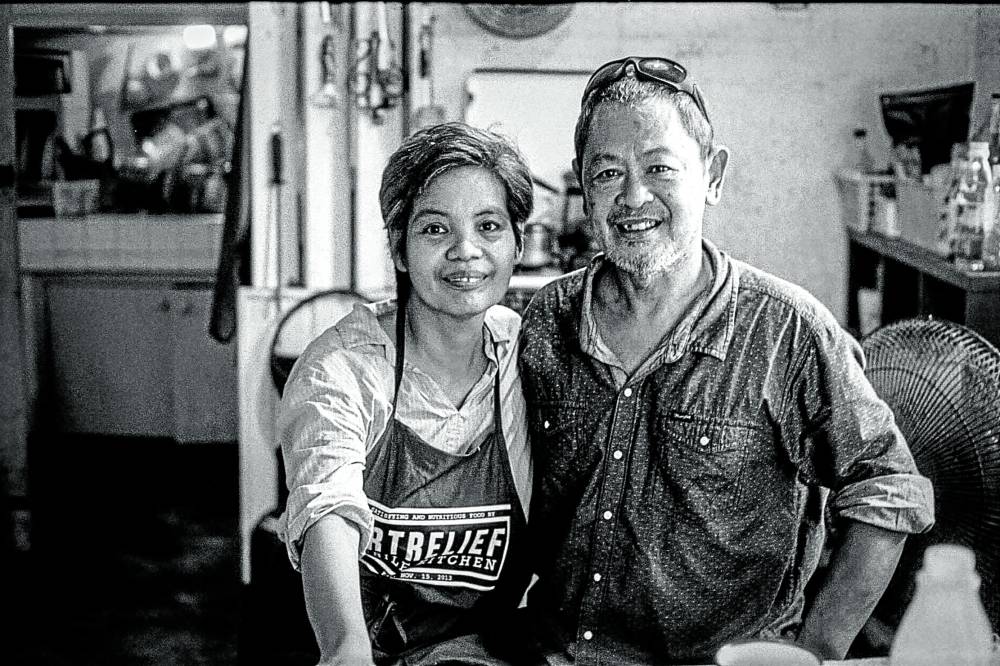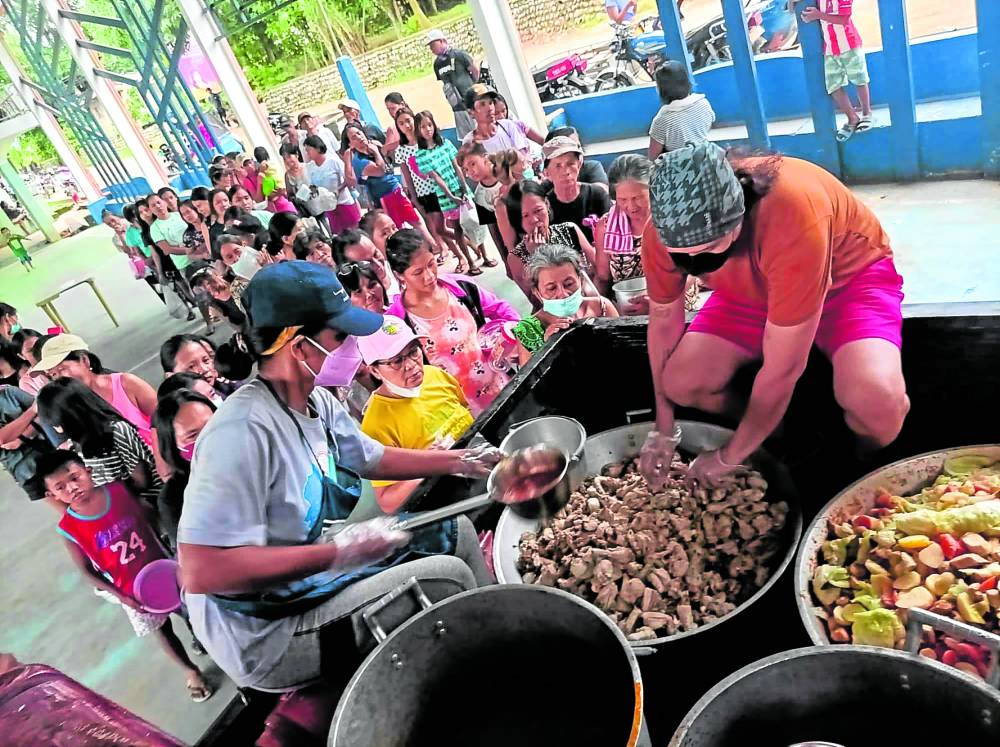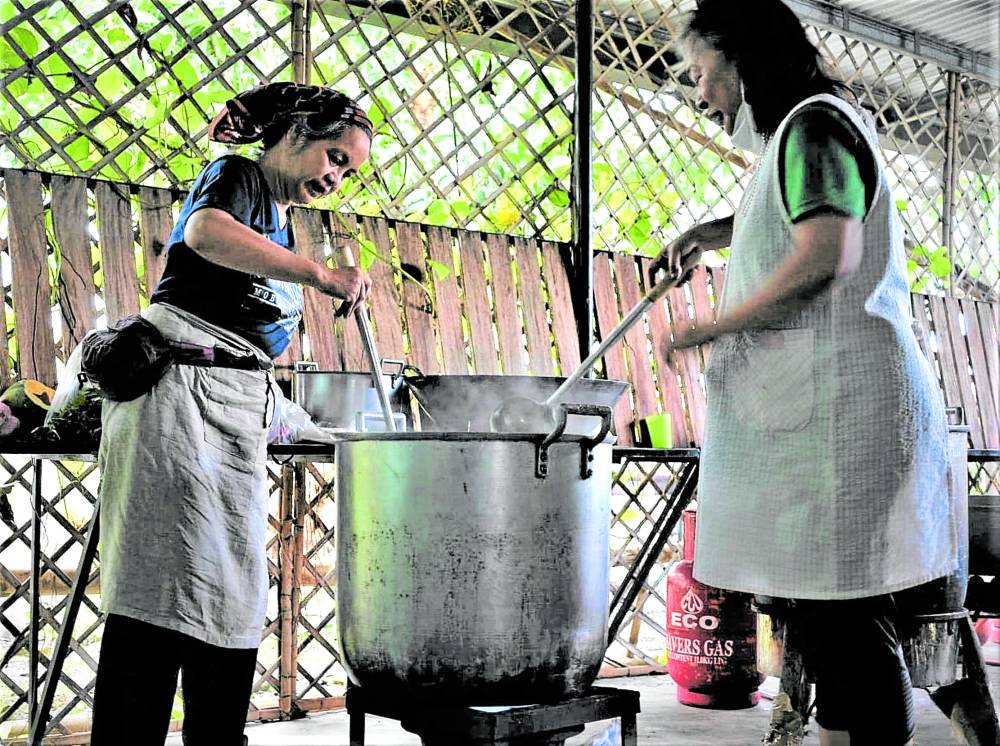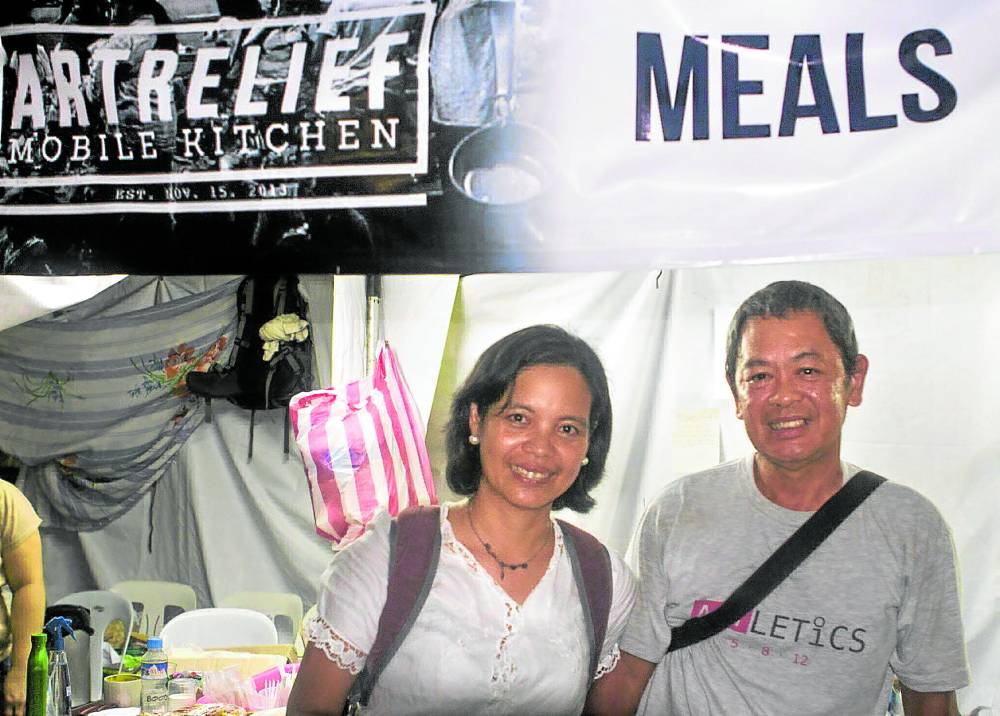
This Sunday, we continue what we started last week, to mark the 37th anniversary of Inquirer, by paying tribute to the heroes we meet in our coverage. —Ed.
A warm meal. A kind word. A welcoming smile.
Imagine what such simple things mean for someone who just survived any of the countless calamities that often befall our country—from typhoons to earthquakes to volcanic eruptions and even this long-running pandemic.
It was 2013, and Supertyphoon “Yolanda” (international name: Haiyan) laid waste to the Visayas and caused a storm surge that barreled through Tacloban City, resulting in death and devastation. Aid came from all over the world, but one Filipino couple—photojournalist Alex Baluyot and cultural worker Precious Leaño—took what little they had and brought it to Villamor Air Base in Pasay City, where the government had flown in survivors, to do one thing: warm the stomachs of weary souls.
Friends and fellow artists, among them other photographers and theater workers, were the first to respond to their call for help, which was how they came up with the name Artist Relief Mobile Kitchen (ARMK).
Baluyot and Leaño raided their own kitchen and hauled everything to the airbase. With a few volunteers and some donations, they were able to feed the evacuees for 22 days.
Then Christmas came fast approaching; still, the situation had yet to improve. ARMK decided to go to ground zero and test out for real the concept of a mobile kitchen.

Not prison food
“We brought all of our equipment in a C130, which was provided by the Philippine Air Force. We brought eight tons of equipment plus 30 volunteers” to cook a Christmas dinner for the people of Tacloban, Baluyot said.
Having a meal from ARMK is almost like being invited into their home. “What we cook—which we call a ‘recovery meal’—is not prison food. We try to make it as tasty as how we cook it at home,” Baluyot said proudly.
“One of our basic protocols is that what we serve to the people during these disasters is what we serve on our own table to our family, our guests,” Leaño added.
And they go even further and make dishes that are regionally appropriate. “For example, they don’t eat sour sinigang in the Visayas. What they eat there is tinola,” Baluyot explained.
Precious added that when they went to earthquake-stricken Abra, they made scrumptious pakbet with highland vegetables donated by the residents of Sagada.
During one Eid’l Fitr in Marawi, Baluyot bought a live cow to make beef rendang. “They were so surprised when I pulled a cow into the truck!” he said, laughing. “The next day, Christians and Muslims, we were all chopping beef side by side together.
“The kitchen is a place where people congregate, tell stories, share histories and cultures,” said Baluyot.
“We don’t have illusions of being able to feed everyone in a town. But we try to set a good example of trying our best to do what is right for the people, for our kababayan—not just dump them with cold noodles, sardines, then make a big splash about it.” Baluyot said. “Show them that you’re there with them, you put your energy into cooking food for them.”

14 volunteers, 1,000 survivors
They follow the International Red Cross protocol of serving one meal a day. It takes a minimum of 14 volunteers to comfortably cook a meal for 1,000 survivors. Ten would be pushing it, though it’s been done. They stay for a minimum of three weeks, but they’ve been known to spend up to three months in a place during a mission.
They learned early on that’s impractical to fly volunteers to calamity areas every time. So what they would do is go on their own and tap volunteers in the locale to man and help in the mobile kitchen. Their greatest find is always a town cook who works during fiestas, because they are masters of their fellow locals’ taste and are used to feeding a multitude of mouths.
They have yet to run out of volunteers. However, Baluyot said there have been close calls.
After an earthquake in Tarlac, he had a hard time finding people who could help because the mobile kitchen base was too far. So he ended up cooking adobo for 1,000 people with only four other volunteers.
Most of the time, though, their mobile kitchen becomes a hub for not only volunteers and survivors to congregate, but journalists and photographers, as well.
“Since I used to be a photojournalist, other photojournalists would always visit me,” Baluyot said. “They would come to wherever we were. And, of course, I would feed them.”
“Wherever the mobile kitchen is becomes a hub for journalists,” Leaño agreed. “There’s food, there are stories, and there’s Wi-Fi. We try to set up where the Wi-Fi signal is strong to make it easier to send photos and information.”
They were scared during the pandemic, the couple admitted. But their work never stopped.
Leaño was locked down together with 12 volunteers inside the Redemptorist Church, where they cooked breakfast, lunch and dinner for doctors, hospital staff and other people who needed meals at the time. They had to create and follow strict protocols, with limited to zero contact. And thankfully, nobody among them contracted COVID.
“We discovered that there were people traveling from Manila to Bicol on foot!” Leaño said. “So what we did was cook adobo and rice, then one of the brothers brought them along when he went driving to where the people were, so they’d have at least one meal for the day as they walked.”
Cooking 24/7
Even with the lockdowns, ARMK still responded, Baluyot said. “This is what we do.”
“We didn’t stop. We were cooking 24/7,” Leaño added.
“That was the time I founded the kitchen in Los Baños,” Baluyot said. “At first, the kitchen was here in the house. Then I asked the barangay captain if we could use the barangay hall instead because there wasn’t much space here. So I was cooking throughout the pandemic.”
When Leaño came back from Lipa and joined him, friendly competition flourished between husband and wife.
Leaño’s team made a makeshift fryer, which they used for their pork adobo, but Baluyot’s team had a makeshift grill which they used to cook 3,000 inihaw na isda.
“We lost there!” Leaño said, laughing. “But we had an oven, and I taught them to make bread. We served homemade bread to hospitals, and there was bread the entire day that everybody could eat.”
“With us, you would never go hungry,” Baluyot said.
It took them a long time, but ARMK is now a nongovernmental organization (NGO).
“I had to convince her that this work is good. We like what we do, and we’re happy doing it. Plus, we get to go on dates!” Baluyot joked, explaining that they spent one Valentine’s Day together preparing food in a huge kitchen by themselves.
It wasn’t until the Taal Volcano eruption of 2020 that Leaño felt ready to take the plunge and make the movement an NGO. “I quit all my jobs, and we put all our focus on ARMK.”
“We like what we do. We enjoy it because, first of all, it’s something that we built ourselves. Second, when we get close to our core volunteers, we become like barkada, best of friends,” Baluyot said.
“Everything that we need to be happy, it’s all there,” he added.














































